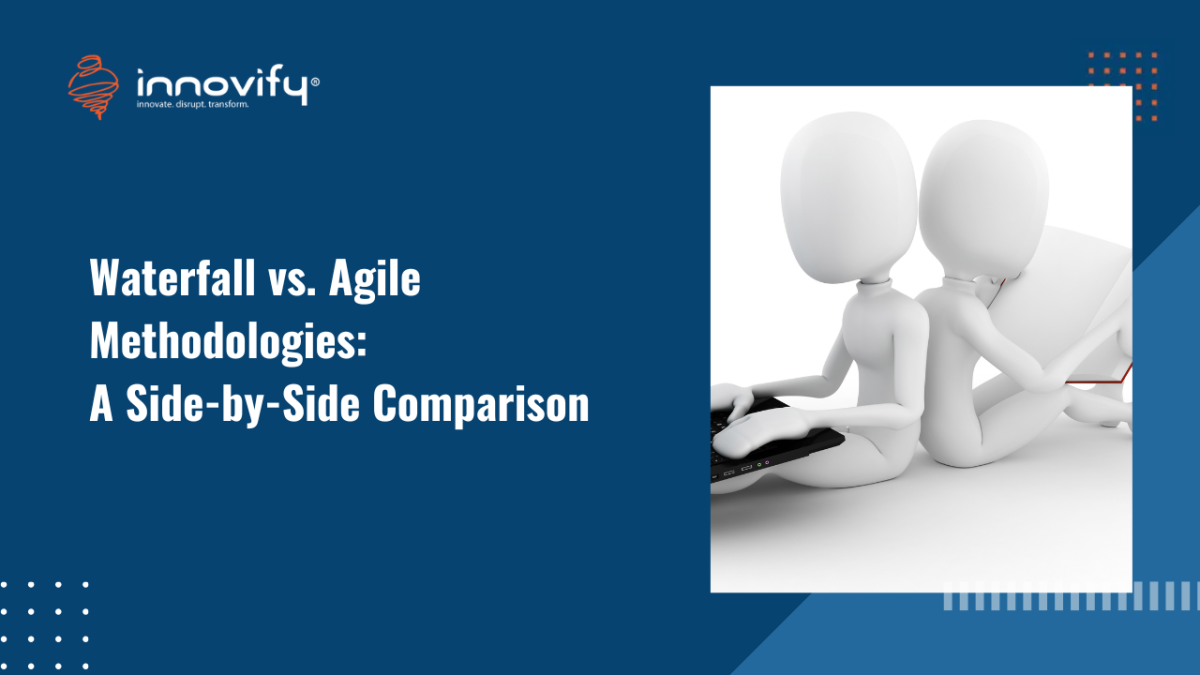AI/ML
Waterfall vs. Agile Methodologies: A Side-by-Side Comparison
There are several ways to develop software, two of the most prominent methods being waterfall and Agile. And as anytime there are two ways to go about something, a debate rages about which is best. Does it matter really? Doesn’t either way give you a product? We’ll let you decide. Today, we’re arming you with information about both waterfall and Agile methodology so that you can make an informed decision as to what you think is best.

Sources: Survey conducted by Serena Software at the Agile 2012 Conference in Dallas 7th State of Agile Development Survey by VersionOne
WHAT IS THE WATERFALL METHODOLOGY?
Much like construction and manufacturing workflows, waterfall methodology is a sequential design process. This means that as each of the eight stages (conception, initiation, analysis, design, construction, testing, implementation, and maintenance) are completed, the developers move on to the next step. As this process is sequential, once a step has been completed, developers can’t go back to a previous step – not without scratching the whole project and starting from the beginning. There’s no room for change or error, so a project outcome and an extensive plan must be set in the beginning and then followed carefully.
WHAT IS AGILE
METHODOLOGY?
Instead of a sequential design process, the Agile methodology follows an incremental approach. Developers start off with a simplistic project design, and then begin to work on small modules. The work on these modules is done in weekly or monthly sprints, and at the end of each sprint, project priorities are evaluated and tests are run. These sprints allow for bugs to be discovered, and customer feedback to be incorporated into the design before the next sprint is run.
WHEN SHOULD YOU USE WATERFALL METHODOLOGY?
1. When there is a clear picture of what the final product should be.
2. When clients won’t have the ability to change the scope of the project once it has begun.
3. When definition, not speed, is key to success.
WHEN SHOULD YOU USE AGILE METHODOLOGY?
1. When rapid production is more important than the quality of the product.
2. When clients will be able to chance the scope of the project.
3. When there isn’t a clear picture of what the final product should look like.
4. When you have skilled developers who are adaptable and able to think independently.
5. When the product is intended for an industry with rapidly changing standards.
DISADVANTAGES OF THE WATERFALL METHODOLOGY
1. Once a step has been completed, developers can’t go back to a previous stage and make changes.
2. Waterfall methodology relies heavily on initial requirements. However, if these requirements are faulty in any manner, the project is doomed.
3. If a requirement error is found, or a change needs to be made, the project has to start from the beginning with all new code.
4. The whole product is only tested at the end. If bugs are written early, but discovered late, their existence may have affected how other code was written.
Additionally, the temptation to delay thorough testing is often very high, as these delays allow short-term wins of staying on-schedule.
5. The plan doesn’t take into account a client’s evolving needs. If the client realizes that they need more than they initially thought, and demand change, the project will come in late and impact budget.
ADVANTAGES OF THE AGILE METHODOLOGY
1. The Agile methodology allows for changes to be made after the initial planning. Re-writes to the the program, as the client decides to make changes, are expected.
2. Because the Agile methodology allows you to make changes, it’s easier to add features that will keep you up to date with the latest developments in your industry.
3. At the end of each sprint, project priorities are evaluated. This allows clients to add their feedback so that they ultimately get the product they desire.
4. The testing at the end of each sprint ensures that the bugs are caught and taken care of in the development cycle. They won’t be found at the end.
5. Because the products are tested so thoroughly with Agile, the product could be launched at the end of any cycle. As a result, it’s more likely to reach its launch date.
THE RESULTS OF ADOPTION OF AGILE METHODS
While it has its naysayers, the CHAOS Report by the Standish Group (2010) show that Agile projects are more successful than Waterfall projects, have fewer challenges and fewer failures. This is not to say, though, that Agile methods like Scrum are a panacea for all project failures and associated problems. Rigour is still needed in the areas of governance, reporting, and risk management in order to increase the project’s health and assure success.
INNOVIFY IS A FAST GROWING DIGITAL INNOVATION & PRODUCT MANAGEMENT COMPANY.
Offering a wide range of expertise, Innovify helps clients to develop innovative products that enable them to focus on key business drivers using a collaborative work model that functions on an Agile & Lean philosophy. Innovify has become a trusted partner to its clients by going beyond the typical scope of application development through a range of digital products such as websites, apps, and software.
Innovify is the right partner for your digital ambitions.




